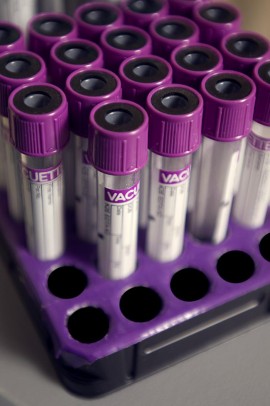Doctors often uncertain in ordering, interpreting lab tests
A survey of primary care physicians suggests they often face uncertainty in ordering and interpreting clinical laboratory tests, and would welcome better electronic clinical decision support tools.
The results of the survey, sponsored by the U.S. Centers for Disease Control and Prevention, were published in the March-April issue of The Journal of the American Board of Family Medicine.
“The optimal testing pathways to arrive at correct diagnoses is changing, so it is difficult for primary care physicians to keep up with new and efficient testing algorithms,” says Dr. John Hickner, professor and head of family medicine at the University of Illinois at Chicago College of Medicine, the corresponding author on the paper.
“This is a situation that clearly fosters uncertainty, so the results of the survey are not all that surprising.”
Over the past 20 years, the number of laboratory tests available to physicians has doubled, to more than 3,500 tests, Hickner said. Primary care physicians are challenged by the quantity of tests available, many of which are similar to others or rolled into panels with other diagnostic tests, he said.
In the national survey, 1,768 physicians in general internal medicine or family medicine reported seeing an average of 81 patients per week, and ordering diagnostic laboratory tests for almost a third of those patients (31 percent). They reported uncertainty about ordering tests 15 percent of the time, and uncertainty in interpreting the results 8 percent of the time.
Physicians reported that their greatest uncertainty comes from absence of information about patient costs (53 percent), insurance restrictions (40 percent) and different names for the same test (20 percent). The biggest challenges to interpretation were missing results and confusing report formats.
More than half of the physicians surveyed reported that information technology solutions to improve ordering and provide quick access to costs would help reduce uncertainty.
Physicians have developed their own strategies for ordering and interpreting lab tests, such as asking a physician colleague or specialist, consulting a text or electronic reference, or calling the laboratory. But physicians reported they would welcome better decision-support software embedded in electronic medical records and direct access to lab personnel through lab hotlines.
Hickner said the authors hope the study will motivate developers to produce better electronic tools for primary care physicians and also bring laboratory specialists onto the patient care team. The study originated in the CDC’s Clinical Laboratory Integration into Healthcare Collaborative.
Pamela Thompson, Anne Pollock, and Julie Taylor of the CDC; Tom Wilkinson, Meghan Sheehan, Jim Lee and Christopher Duke from the Altarum Institute of Ann Arbor, Mich.; Paul Epner of Paul Epner LLC; and Dr. Brian Jackson of the University of Utah and ARUP Laboratories of Salt Lake City are coauthors on the paper.
The study was supported in part by contract GS-10F-0261L from the CDC’s Agency for Toxic Substances and Disease Registry.
Categories
Topics
diagnostics, family medicine, health care, information technology, laboratory tests, technology


